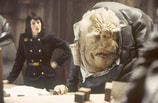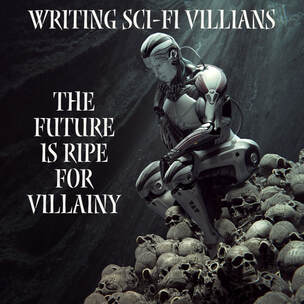|
Science fiction villains are unique due to their many avenues to enact villainy. Evil robots, bioweapons, clones, nano-tech, A.I and so on. Some of these even combine. Maybe the antagonist is a highly developed rogue A.I. who uses virus-infected nano-bots to mass murder an army of clones. Often, featuring futuristic tech is the story's catalyst. And that’s not wrong. After all, who would Dr. Who be without time travel, or where would the Star Trek Enterprise go without warp speed. They’d be stuck in our boring solar system, trying to get water from rocks. No fun. However, the plot and the characters can’t get lost in the exciting technology because you’ll end up with all flash and no substance. The Future of VillainyThe future is ripe for villains. In a post-apocalypse, they’ve already ruined the world, so you’ll need to chronicle the progression of destruction. On the other hand, post-apocalyptic characters are often fighting for survival, making the villains of these stories people who are just slightly more desperate than those who won’t resort to misdeeds. As I mentioned, science fiction plots often hinge on the new and developing. Villains using new technology to enact evil are often of the super-intelligent sort. So, following the rules for writing genius characters is essential if your villain is the mad-scientist type. Inhuman Villains Sci-fi villains come in many forms, and they are often alien or artificial intelligence. These bad guys can be hard to write about because their motivation may be incomprehensible e to humans. How you write this is a narrative choice and leaving the reason for the wrongdoing shrouded in mystery is an option. Conversely, aliens can have similar or the same motivations as humans, and A.I., having been programmed by us, can have built-in human desires. Sci-Fi Villains in Literature The Vorgon aliens in Douglas Adam’s Hitchhiker’s Guide to the Galaxy are a menace destroying humanity as easily as you order lunch. As a race, they are in the love-to-hate category of villainy for their relentless bureaucracy. Though individual Vorgons each have their own flavor of malevolence. The A.I. in Harlan Ellison’s short story (and later video game) “I Have No Mouth, and I Must Scream” was built to battle in World War III. So, initially, the creators are the villains; however, once the A.I. gains sentience and begins killing indiscriminately, it becomes a villain in its own right. Series Summary The ingredients for a well-written bad guy are timeless. The only thing that changes from genre to genre is their mode of evil. The villain might mean well and just be a little evil or be bent on world domination. The depth of their character is necessary, but it can be hard to ensure character stands out. Connect your readers to the villain the same way you connect your heroes. Give a reason why the villain is the way she is. Give your readers a reason to care, or barring that, a reason to hate. Villains resonate with readers for three reasons: we see ourselves in them, or we like them despite their villainy, or they are so evil we want to see them defeated. The best villains are one of the two, but rarely all three. Think back to the Villain I started the series with – Long John Silver. He was likable but so treacherous that, in the end, we all wanted to see his comeuppance. And that’s the crux of it, Villains are made to be defeated, but that doesn’t mean we can’t love them a little along the way. Other Blogs in this Series
1 Comment
|
Alison Lyke
Categories
All
Archives
November 2022
|



 RSS Feed
RSS Feed
